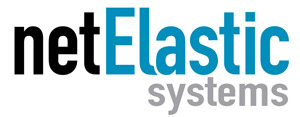Marc Andreessen famously said “Software is eating the world.” Time has proven Andreessen to be prophetic.
We can now say “Software is eating the network.”
The Road to Software-Based Networks
Network functions virtualization (NFV) is driving the transition to software-based networks. NFV virtualizes network services, such as routers and firewalls that have traditionally been run on proprietary hardware. Proprietary “closed systems” unfortunately are expensive, inflexible, and difficult to scale.
Virtual network functions run on commodity hardware, enabling broadband providers to run their network on lower-cost, open x86 servers instead of proprietary ones. NFV also eliminates the need to have dedicated hardware for each network function.
With NFV, providers can take functions that exist in the network and turn them into software, which makes them much more flexible and scalable. This means providers can deliver new services on-demand, without having to upgrade or purchase new hardware.
A Virtualization Use Case: Broadband Network Gateways

A Broadband Network Gateway (BNG) is the access point for individuals (subscribers) to connect to the broadband network. The BNG aggregates traffic from many subscribers and routes it to the network of the service provider. Once connected, a subscriber can access the broadband services delivered by their provider.
Broadband providers traditionally bought hardware-based BNGs from large router manufacturers, such as Cisco and Juniper. However, these proprietary closed-systems suffer from high costs, lack of scalability, and vendor lock-in.
netElastic was one of the first vendors to develop a virtual, or software-based broadband network gateway (vBNG). With an extensive background in software-defined networking (SDN) and NFV, netElastic was founded to help broadband providers transform their networks through network virtualization.
How netElastic vBNG was Developed
Unlike companies that build a product and then look for a market, netElastic went to the market and then built a vBNG product.
netElastic built their Virtual BNG from the ground up by working with eight of the top twenty carriers in the world (in addition to many smaller ones). This valuable feedback laid the foundation for the features and functionality of netElastic vBNG. And today, netElastic continues to develop new vBNG features based on feedback from customers.
Nigel Rayneau, CEO of New Zealand-based service provider Ufone, said “The ability to have certain features developed based on our use case is otherwise unheard of. I have yet to find another vendor who will implement a fully tested and supported feature into their product in a number of weeks in order to add new functionality or improve existing functionality, and to do so at no additional cost.”
Meeting the Needs of Broadband Providers
In meeting with broadband providers, many expressed a need for the specific benefits NFV delivers, including greater network:
- Flexibility
- Scalability
- Cost savings
However, since vBNGs typically replace access routers from companies like Juniper and Cisco, some providers expressed concern about vBNG performance.
Acting on this input, netElastic and Intel have been working together to maximize Virtual BNG performance. Recently, Intel tested netElastic vBNG on an Intel® Select Solution for NFVI Forwarding Platform. The test results showed vBNG achieved up to 380 Gbps throughput per server, which is a new level of performance for Virtual BNGs.
Intel recognized netElastic vBNG in the Intel® Network Builders Winners’ Circle Program. The Winners’ Circle programs aims to reward the most innovative solutions in the Intel ecosystem.
Turning Feedback into a New Product
Customer feedback also led to the development of a new product – BNG Manager. BNG Manager is a user-friendly web-based management application that makes it easy and intuitive for service providers to quickly configure their vBNGs and monitor how the network and vBNG are performing.
“netElastic was one of the first vendors to develop a Virtual BNG from scratch based on service provider feedback, and we’ve been listening to our customers ever since,” said Weixiao Liu, CEO at netElastic. “Based on that feedback, we developed BNG Manager to deliver greater visibility into vBNG operations and provide in-depth subscriber information to identify and resolve customer issues faster.”
Focus is Key

As the transition to software-based networks continues, netElastic’s mission is to help broadband providers transform their networks through network virtualization. netElastic is uniquely qualified to do this, since netElastic is a pure software company with no allegiance to proprietary hardware. And unlike hardware router manufacturers that sell BNGs along with many other products, netElastic is dedicated to Virtual BNG.
netElastic has become a leader by focusing on customers and focusing on Virtual BNG. The power of netElastic’s singular focus on vBNG, and our dedication to including the voice of the customer in all product development, enables netElastic to deliver innovative vBNG solutions to broadband providers worldwide.
To learn more on the benefits service providers are achieving with netElastic vBNG, please read the Ufone case study.

